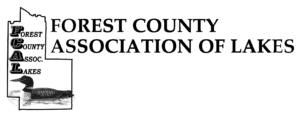As the vibrant hues of autumn blanket Northern Wisconsin, the beauty of falling leaves is undeniable. However, beneath this attractive scene lies an environmental challenge that often goes unnoticed: the impact of leaf litter on the health of our lakes. While leaves are a natural part of the ecosystem, their accumulation in urban and rural areas can have unintended consequences for water quality and aquatic life. When leaves fall to the ground, they begin to decompose, releasing nutrients like phosphorus and nitrogen. In natural forested areas, this process enriches the soil and supports plant growth. However, in urban or suburban settings, where impervious surfaces like roads and sidewalks dominate, rainwater washes these decomposed leaves into storm drains and, eventually, into nearby lakes and rivers. This also goes for lakefront properties with leaves as they can be blown or washed into the water. Once in the water, the excess nutrients from leaf litter can fuel the growth of algae, including harmful algae blooms. These blooms not only disrupt the natural balance of aquatic ecosystems but can also produce toxins that are dangerous to humans, pets, and wildlife. Additionally, as algae die and decompose, they consume oxygen in the water, creating “dead zones” where fish and other aquatic organisms struggle to survive. Northern Wisconsin is home to countless pristine lakes that are cherished for their recreational, ecological, and cultural value. However, these lakes are not immune of the effects of nutrient pollution. In areas with heavy tree cover, particularly near residential developments or along roadways, leaf litter can accumulate and contribute to water quality issues. For example, studies in Madison, Wisconsin, have shown that timely removal of leaf litter can reduce phosphorus concentrations in stormwater runoff by over 80%. While Northern Wisconsin may not face the same urban pressures, the principles remain the same: proactive management of leaf litter can help protect these treasured waters. There are a few different ways you can help minimize the impact of leaf litter on lakes. The first is simply just raking and removing leaves, this prevents the leaves from being washed into the lake, composting or mulching leaves is an eco-friendly way to dispose of them. Another thing lake owners can do is plant native vegetation along shorelines to create a buffer zone which act as a natural filter, trapping nutrients before they reach the water.
Conservation Corner is a weekly article produced by the Forest County Land Conservation and Land Information Department. For more information contact Lucas O’Brien, Forest County Land Conservation Technician at 715-478-1387 or by e-mail at

